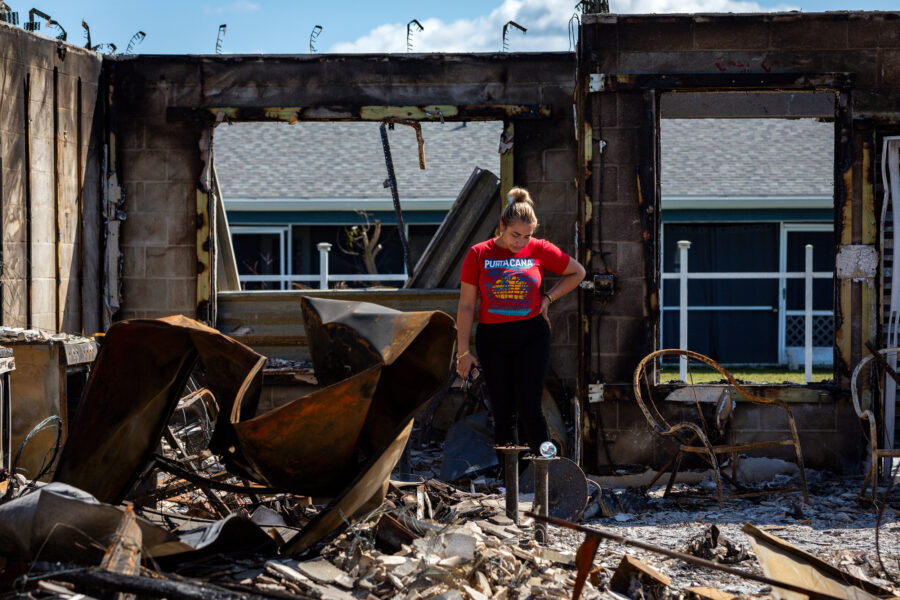Accounting for flood risk would lower American house prices by $187bn
Floods are the most expensive type of natural disaster in America, causing at least $323bn in direct damage since 1960 after accounting for inflation. Unlike other types of risks, private insurers generally do not offer residential coverage for floods.  PREMIUM
PREMIUM
To fill this void, Congress set up the National Flood Insurance Programme (nfip). Homeowners in “100-year floodplains”, where regulators reckon that the chance of flooding each year is at least 1%, can get government-backed mortgages only if they are insured. But on average, the amount of money that the nfip collects in premiums each year is less than the amount it has to pay out, so it has to borrow, thus passing the bill on to the government: in 2017 Congress forgave $16bn of the nfip’s debt. Moreover, the nfip’s payouts are less than the total amount of damage caused by floods. The shortfall is paid by uninsured homeowners, and by those whose damages exceed the nfip’s maximum claim size.
In 21 of the 50 states, sellers of homes do not have to disclose past damages or future risks from floods. Moreover, even if buyers are informed, they often fail to discount their offers sufficiently. The combination of subsidised insurance and myopic buyer behaviour means that houses in flood-prone areas are overpriced. One study in 2021 estimated this overvaluation at $33bn-56bn. But a new paper in Nature Climate Change, whose lead author is Jesse Gourevitch of the Environmental Defence Fund, an advocacy group, puts it at $121bn-237bn, with a central estimate of $187bn.
The difference stems from assessments of flood risk. The earlier figures relied on the nfip’s historical premiums, which take little account of risks from heavy rain or along small waterways, and do not factor in climate change. In contrast, the new study is based on maps produced by First Street Foundation, a research group, which add up the risks from all potential causes of flooding in a warming world. It finds that at least 6.9m American homes are overpriced because of expected flood damages, with 1.2m overvalued by at least 10% and 660,000 by more than 25%.
In total dollars, overpricing is greatest in posh bits of coastline, such as Los Angeles and parts of South Carolina’s Lowcountry. Florida, where 66cm of rain submerged Fort Lauderdale’s airport on April 12th, accounts for $50bn of overvaluation by itself.
But as a share of home values, the risk is greatest in rural, inland regions. In parts of Appalachia, New England and Montana, the median property is 30-50% overvalued. Many of these areas lack tunnels and pipes to channel water from storms, meaning that heavy rains can cause flash floods in rivers, creeks and streams, particularly at the bases of mountains. Last July downpours in Kentucky produced floods that swept houses away and killed 39 people.
On current trends, this housing bubble is likely to feed on itself. The higher the prices that homes in risky areas sell for, the more incentive developers have to build in those regions. The most efficient way to stop flooding from popping this bubble is for premiums to start reflecting expected damages. That might entail carving out a bigger role for private insurers, which left the business after the Great Mississippi Flood of 1927 led to large losses.
The nfip has taken the first step with a new premium-setting system, based on frequencies and types of flooding, distances to water sources and property values. However, federal law limits how much premiums can rise. Faster increases would saddle homeowners in flood-prone regions with higher expenses and falling house prices. It would also deprive local governments that depend on property taxes, in areas as diverse as Idaho and the rural north-east, of crucial revenue. But maintaining the status quo means that taxpayers elsewhere will keep footing the bill.
For more coverage of climate change, sign up for The Climate Issue, our fortnightly subscriber-only newsletter, or visit our climate-change hub.
Chart sources: First Street Foundation; Sheldus.org; “Unpriced climate risk and the potential consequences of overvaluation in US housing markets”, by Jesse Gourevitch et al., Nature Climate Change, March 2023
© 2023, The Economist Newspaper Limited. All rights reserved. From The Economist, published under licence. The original content can be found on www.economist.com
Enjoy unlimited digital access with HT Premium
Subscribe Now to continue reading Start 14 Days Free Trial Already Subscribed? Sign In
Disclaimer: The copyright of this article belongs to the original author. Reposting this article is solely for the purpose of information dissemination and does not constitute any investment advice. If there is any infringement, please contact us immediately. We will make corrections or deletions as necessary. Thank you.
Title:Accounting for flood risk would lower American house prices by $187bn
Url:https://www.investsfocus.com









